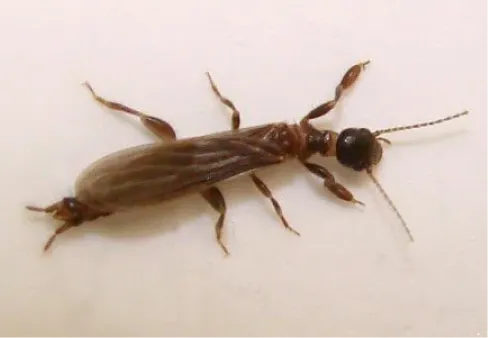Black widow spiders are venomous arachnids with distinctive red hourglass marking. They build irregular webs in dark corners and pose significant health risks if disturbed.

Black widow spiders are one of Southern California's most medically significant arachnids, recognized by their distinctive shiny black coloration and red hourglass marking. These venomous spiders are commonly found in dark, undisturbed areas around homes and structures, posing a serious health risk to humans and pets.
While generally not aggressive, black widows will defend their webs and can deliver a potentially dangerous bite if disturbed. Females, which are larger and more venomous than males, can produce multiple egg sacs containing 200-900 eggs each. Their irregular cobwebs are often found in cluttered areas, woodpiles, and dark corners of garages and outbuildings. Despite their fearsome reputation, black widows play a beneficial role in controlling other pest populations, though their presence near human habitation requires careful management due to their medical significance.

Anatomy of Black Widow Spiders
Black widow spiders possess distinctive anatomical features specialized for web-building and prey capture, with significant sexual dimorphism between males and females.
- Eyes
- Pedipalps
- Cephalothorax
- Abdomen
- Legs
- Spinnerets

How to Identify Black Widow Spiders
Female black widows are unmistakable with their shiny black coloration and distinctive red hourglass marking on the underside of their abdomen. Males are smaller, brown, and often show striped patterns.

Habitat of Black Widow Spiders
These spiders prefer dark, undisturbed locations such as wood piles, cluttered garages, and dense vegetation. They build irregular, strong webs in protected corners and crevices with high prey traffic.

Warning Signs of Black Widow Spiders
Look for irregular cobwebs, egg sacs, and web debris in dark corners and secluded areas. Night activity and the presence of irregular, sticky webs are common indicators.
Warning Signs of Black Widow Spiders
Look for irregular cobwebs, egg sacs, and web debris in dark corners and secluded areas. Night activity and the presence of irregular, sticky webs are common indicators.







Control Methods for Black Widow Spiders
Management combines regular web removal, habitat modification through decluttering, and strategic chemical treatments. Focus on eliminating harborage areas and sealing entry points.
Black widow bites can be serious, causing severe pain and systemic symptoms. While rarely fatal, medical attention should be sought immediately.
Black widows prefer dark, undisturbed areas like woodpiles, cluttered garages, and dense vegetation. They build irregular cobwebs in protected corners.
Female black widows are shiny black with a distinctive red hourglass marking on their underside. Males are smaller and often brown.
Female black widows can produce several egg sacs, each containing 200-900 eggs. They often guard their egg sacs until they hatch.
Female black widows sometimes eat males after mating, though this behavior is less common than previously thought.
Female black widows can live 1-3 years under favorable conditions. Males typically live for a few months after maturity.
We Provide the Care toEliminate Termites and Pests For Good
Protecting your home from pests shouldn't be complicated. The Termite Guy makes it simple with wholistic solutions to inspect, treat, and restore your home back to perfection. With a 5 year pest-free warranty and over 25 years of success, we ensure every home is safe and secure.

Inspections

Treatments

Damage Repair
.avif)
.avif)
.avif)
.avif)











































